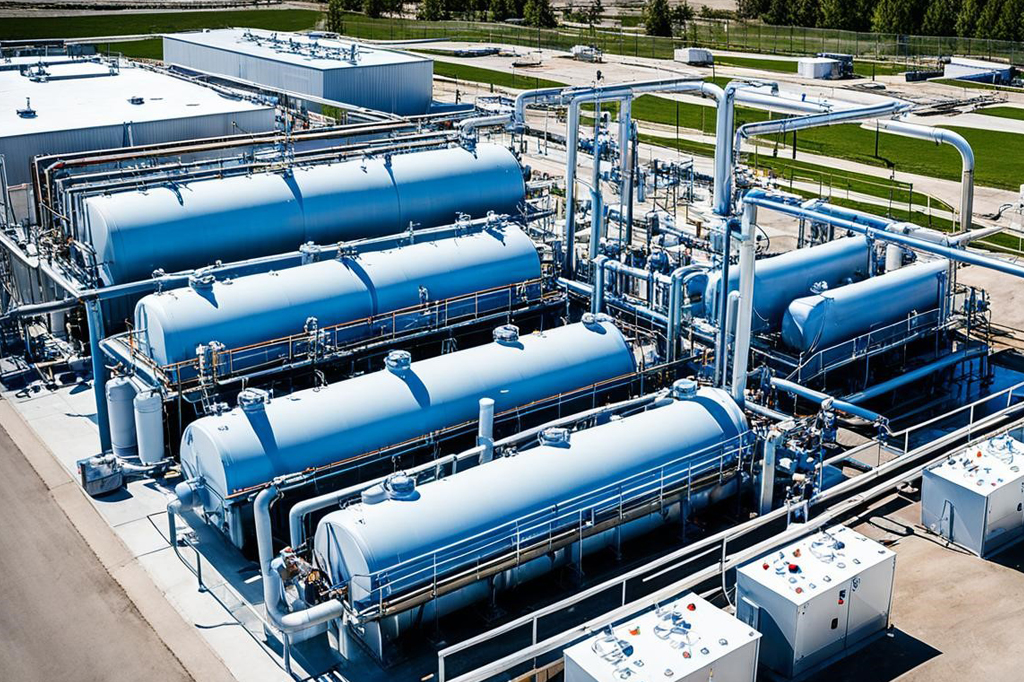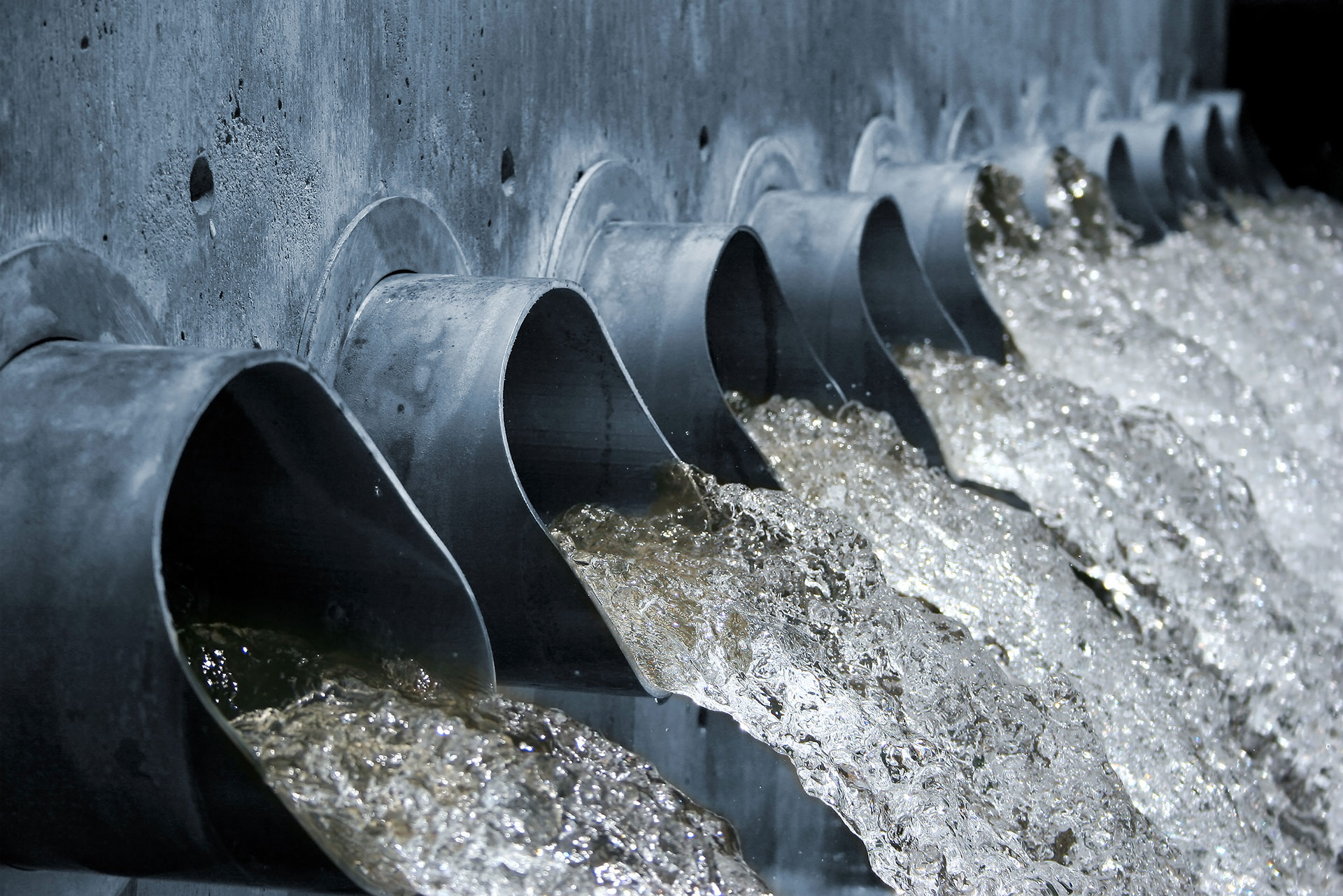Advancements and Advances in Hazardous Waste Water Treatment Technologies
The landscape of industrial wastewater therapy is undergoing a transformative change, driven by innovations that boost both efficiency and sustainability. Arising technologies, such as membrane layer bioreactors and microbial fuel cells, are redefining pollutant removal processes while adding to energy generation. In addition, resource recuperation approaches are obtaining traction, straightening with circular economic situation principles. As regulative criteria develop, the assimilation of AI and artificial intelligence right into wastewater management systems guarantees to make certain and streamline operations conformity. Nonetheless, the complete implications of these improvements elevate critical concerns regarding their scalability and lasting influence on industry methods.
Overview of Drainage Therapy Technologies
Wastewater therapy modern technologies include a series of techniques designed to remove impurities from commercial effluents before their release into the setting. These innovations are important for preserving ecological equilibrium and ensuring conformity with environmental regulations. The key groups of wastewater treatment include physical, chemical, and organic methods, each offering unique functions based upon the nature of the pollutants present.

Organic therapy methods employ bacteria to weaken natural matter, making them especially reliable for organic-rich effluents. Strategies like activated sludge and biofilm reactors harness the natural deterioration abilities of microorganisms, bring about significant reductions in biochemical oxygen demand (BOD)
Advanced Filtering Methods
Advanced filtering methods stand for an essential evolution in the world of commercial wastewater therapy, boosting the performance of impurity elimination procedures. Industrial Waste Water Treatment. These approaches incorporate a range of innovations, including microfiltration, ultrafiltration, nanofiltration, and reverse osmosis, which offer sequential barriers for various particle dimensions and chemical frameworks
Microfiltration and ultrafiltration make use of membrane layer systems to eliminate suspended solids, bacteria, and larger natural particles, boosting the high quality of effluent prior to additional treatment. Nanofiltration bridges the void in between ultrafiltration and reverse osmosis, efficiently removing natural compounds and divalent ions, thus reducing the load on downstream procedures.
Reverse osmosis uses the highest degree of filtration by permitting only water and small particles to pass with its semi-permeable membranes, making it perfect for reclaiming high-grade water from commercial effluents. Recent advancements in membrane layer innovation, consisting of the advancement of more fouling-resistant and sturdy materials, have actually dramatically enhanced operational performance and minimized costs.
Including these sophisticated purification methods not only improves the overall therapy process yet likewise contributes to sustainability initiatives by allowing water reuse and source healing in commercial setups. (Industrial Waste Water Treatment)
Biological Therapy Innovations

Additionally, the development of crafted biological systems, such as membrane layer bioreactors (MBRs), incorporates biological therapy with sophisticated membrane purification. This combination permits greater effluent quality and lowered footprint, making it ideal for space-constrained industrial centers. Advancements in genetically engineered microbes have actually additionally arised, enhancing the biodegradation of specific impurities, such as this page pharmaceuticals and hefty steels, that are traditionally testing to remove.
In addition, the implementation of bioaugmentation approaches, where helpful microbes are presented to boost the existing biological therapy procedures, has revealed promising outcomes in boosting treatment efficiency. These innovations collectively indicate a trend towards even more effective and lasting biological treatment techniques that can adapt to the developing intricacies of commercial wastewater streams. As industries remain to focus on ecological conformity, these biological developments will certainly play a critical role in wastewater administration.

Source Recovery Methods
In commercial settings, the assimilation of resource recovery techniques has come to be increasingly essential for enhancing sustainability and reducing waste. These approaches focus on extracting useful materials and power from wastewater streams, thereby changing potential contaminants right into recyclable sources.
One popular strategy is nutrition recuperation, where nitrogen and phosphorus, typically existing in excess in wastewater, are recorded and exchanged fertilizers. This not only lowers environmental impacts however additionally offers a round economy option for farming applications. Additionally, modern technologies such as anaerobic digestion enable imp source the conversion of natural waste into biogas, a renewable resource source that can balance out nonrenewable fuel source usage in industrial operations.
Moreover, progressed filtration and membrane layer modern technologies facilitate the healing of commercial by-products such as salts and steels. These recouped materials can be reintegrated into manufacturing procedures, reducing the requirement for virgin sources.
Future Fads in Waste Water Management
As markets progressively focus on sustainability, the future of wastewater monitoring is set to undergo considerable transformations. Technological developments, such as synthetic knowledge and equipment learning, will allow extra efficient tracking and administration of wastewater systems. These innovations can anticipate upkeep demands, maximize therapy procedures, and enhance decision-making, ultimately reducing functional prices and ecological effect.
Additionally, the combination of round economy concepts will certainly play a crucial duty in wastewater monitoring. Industries are expected to shift towards systems that not just deal with wastewater however likewise recover valuable sources, such as nutrients, water, and energy. This transition will certainly lessen waste and promote the reuse of materials, straightening with worldwide sustainability goals.
Arising therapy methods, such as membrane bioreactors and progressed oxidation processes, will certainly better improve the effectiveness of wastewater therapy, enabling higher quality effluents ideal for reuse. Additionally, governing structures are likely to advance, highlighting stricter criteria for wastewater discharge and important link encouraging industries to take on innovative therapy options.
Conclusion
In final thought, the development of commercial wastewater therapy modern technologies shows a considerable change towards improved efficiency and sustainability (Industrial Waste Water Treatment). Developments in sophisticated filtration methods, biological therapies, and source recovery techniques highlight the market's dedication to environmental stewardship.
The landscape of industrial wastewater treatment is going through a transformative change, driven by developments that improve both effectiveness and sustainability.Wastewater treatment innovations incorporate a range of approaches designed to eliminate impurities from commercial effluents before their release right into the environment.Using the power of biological procedures has actually led to considerable technologies in the therapy of industrial wastewater.In addition, the implementation of bioaugmentation techniques, where helpful microorganisms are introduced to boost the existing organic therapy procedures, has actually shown encouraging outcomes in boosting therapy efficiency. These innovations collectively symbolize a fad in the direction of even more effective and sustainable biological therapy techniques that can adapt to the developing intricacies of industrial wastewater streams.